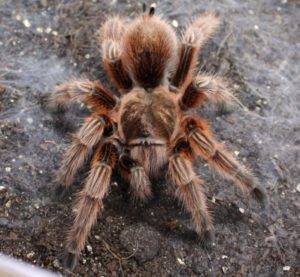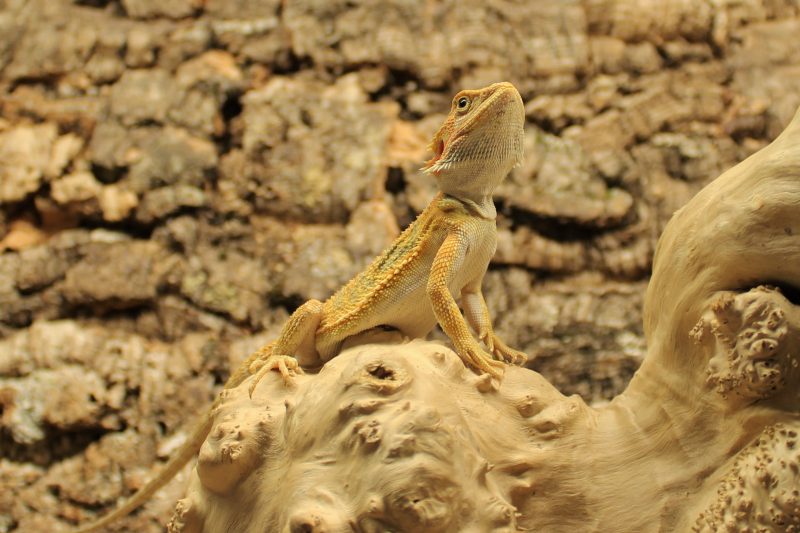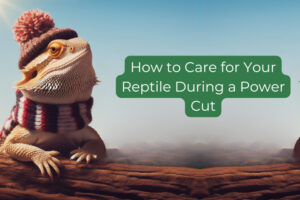
Tarantula care guide
Welcome to Evolution Reptiles’ guide to tarantula care! Whether you’re a seasoned arachnid enthusiast or just starting your journey into the fascinating world of these

One of the most essential parts of reptile keeping is to have the right environment. It is vitally important to have the right type of lighting and heating, substrate and decor, thermometer and thermostat; but the single the biggest part of a bearded dragon’s home is the vivarium! As long as you get the choice of vivarium right then your dragon will not outgrow their house, and you won’t need to be replacing it for the whole of their – potentially long – lives.
There are an awful lot of opinions on the internet. Some people advise a smaller house for a baby dragon and to work up to a larger one, others say you should start as you mean to go on; and the disagreements over how to light, heat and decorate your dragon’s home are even worse!
By buying an adult-sized enclosure you are providing your bearded dragon with the best option for their health and wellbeing. You won’t have to replace it, you won’t need to upgrade your lighting and heating and overall, it’s by far the easiest option in the long run! Do it once and do it right, and your beardie will lead the long and happy life it deserves.
To explain why a large enclosure is needed, we need to look at the adult size of a bearded dragon. There are eight species of bearded dragon found in the wild in Australia, with sizes varying from the Eastern bearded dragon (Pogona barbatus) at 60cm down to the tiny Kimberley bearded dragon (Pogona microlepidota) at a mere 15cm when fully grown.
Several of these different bearded dragon species are found in the UK, but the commonest – the ‘typical’ bearded dragon – is the Central bearded dragon (Pogona vitticeps). Truthfully, your classic pet type bearded dragon is probably something of a hybrid, which would explain the huge range of sizes and colours that can be found in our pet dragons.
Another species of dragon that you will sometimes see is the Rankin’s dragon (Pogona henrylawsoni), sometimes called the Dumpy or the Dwarf bearded dragon. These usually only reach a total length of 20cm to 30cm and are sometimes recommended for a smaller vivarium. However, they are more shy than your classic beardie, and can be a lot more delicate; some of them like to live in groups, and even the ones that don’t will only thrive in a larger vivarium than is usually offered to them.
If you’ve ever come across an animal described as a Vittikins dragon, bear in mind that these are not separate species. They are a hybrid between the Rankin’s and the Central bearded dragon, and due to this, there is no way of telling how large they will grow. Always assume that it will grow to the size of the largest parent!
Generally, pet type bearded dragons grow to between 45cm and 60cm in length, although the really big ones are becoming more unusual these days. The ‘German Giant’ type of bearded dragon – which is supposed to consistently grow to over 60cm – appears to be a myth.
The minimum size for a bearded dragon vivarium is 120 x 60 x 60cm – but bigger is always better!
It’s always worth assuming that your dragon is going to be a big one! Even at 45cm, a 120cm vivarium is only just over twice the length of the dragon. It’s not unreasonable to expect that your pet can turn around in its house without touching the sides, so we wouldn’t go for a floor size of less than 120cm x 60cm.
Bearded dragon babies are very active, and will use all the space they are given; they are also very effective hunters, so you don’t need to worry that they won’t be able to find their food in a large space. After all, their instincts are the same as their wild cousins – and the Australian outback is a big place!
It’s a false economy to buy a smaller vivarium for your baby beardie. Their growth rate is enormously fast, and they need a vivarium that gives them enough room to move, to hunt, to bask and to get away to a shady area to rest. So in order to make sure that they have enough room to do all these things, they need plenty of space.
It can look a little strange to have a tiny, eight week old dragon in a great big vivarium! They cope very well with a large space, but it’s worth bearing a few things in mind when you’re assembling the enclosure.
It won’t take long for your beardie to settle into their enclosure, but you can make it easier for them by following the above tips.
Assembling your bearded dragon setup doesn’t have to be difficult. If you are using the standard 120 x 60 x 60cm then you will need UVB, a basking light, a thermostat and a digital thermometer. Most normal centrally heated homes will not need additional night time heating – it gets cold in the outback at night, so your dragon will be fine with a temperature drop – but if you have a particularly cold home, then you will need to add in night time heating.
Don’t panic, it’s not as difficult as it sounds! We have several different bearded dragon setups to choose from, and we are more than happy to help you choose which one will be right for you and your dragon.
When it comes to decor, your dragon will enjoy a three dimensional approach to their new home. Sturdy branches that are easy for claws to grip, and plenty of fake greenery to provide dappled shade and make the enclosure more interesting for them to move around in.
Your vivarium can either come flat packed or ready made, it’s up to you. We also have setups in store that you can just take home and plug in, which is the easiest way of all to begin your beardie keeping adventure!
If you would like to find out more about keeping a happy and healthy bearded dragon, then please feel free to contact us here in our Oxfordshire store and we will do our very best to help. For further information on bearded dragon and other reptile care we have an extensive range of care sheets on the care hub portion of our website, as well as our blog that you might find useful for wider information on the subject of reptile keeping.
We hope to hear from you soon!

Welcome to Evolution Reptiles’ guide to tarantula care! Whether you’re a seasoned arachnid enthusiast or just starting your journey into the fascinating world of these

How to Care for Your Reptile During a Power Cut Power cuts can be stressful, especially when you have a reptile that relies on a

Pete’s Grow Your Own Herbivore Salad Mix Buy now What’s included in the pack Organic compost Pack of mixed seeds Planting tray with drainage holes
Copyright 2021 Evolution Reptiles
All rights reserved.